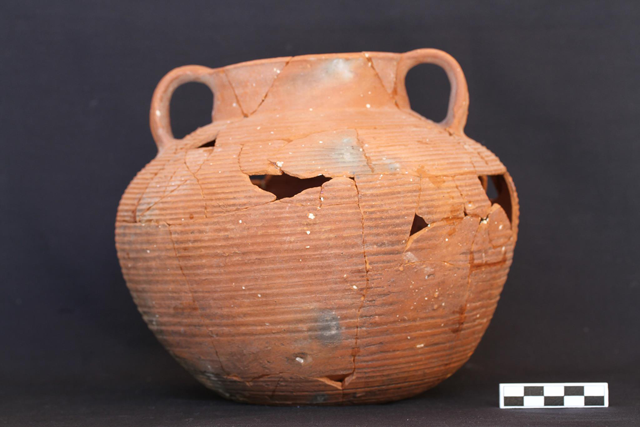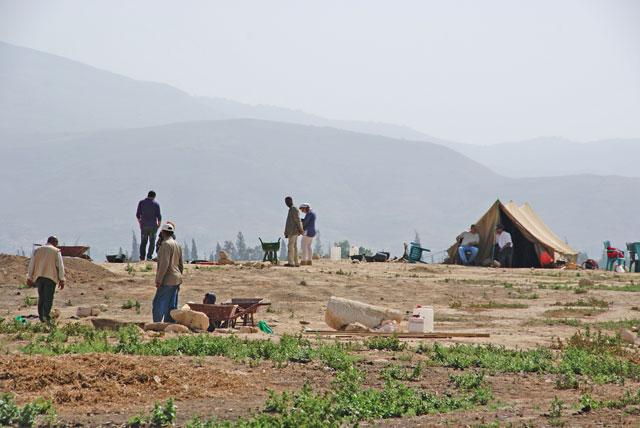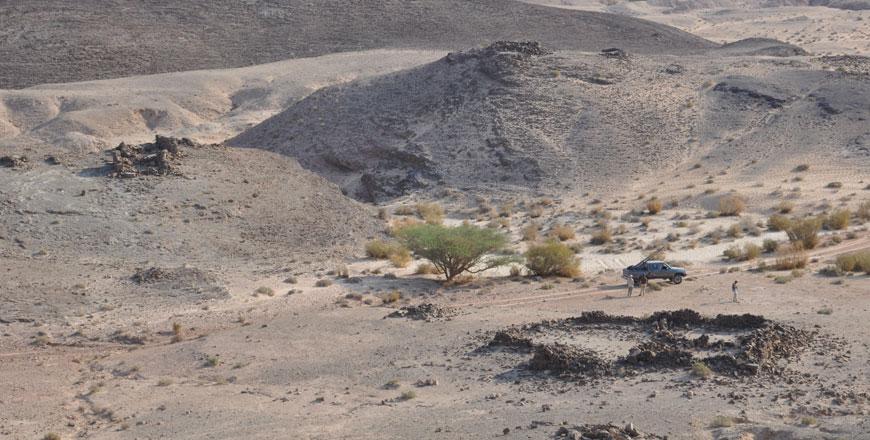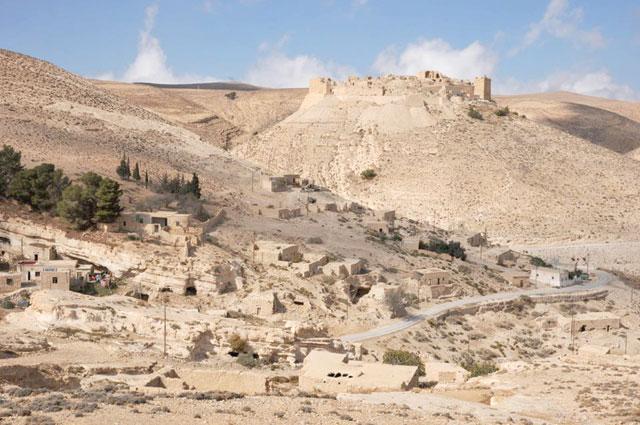You are here
Ancient sugar production in Jordan Valley: Discovering Tell Abu Sarbut’s history
By Saeb Rawashdeh - Feb 04,2024 - Last updated at Feb 04,2024

A pot found at Tell Abu Sarbut (Photo courtesy of Tell Abu Sarbut project)
AMMAN — Tell Abu Sarbut is located in the central Jordan Valley, among agricultural fields irrigated by small channels. The hill is 250 metres long and 125 wide and it was occupied during the Roman and Ayyubid - Mamluk periods. The early remains excavated there belong to the Roman period while the later belong to the Mamluk stage, the 14th century, when it became an industrial centre, based on the remains of the pottery.
“The ash layers had clearly been dumped there, as the surfaces on which they were found were not burnt at all. It remained unclear which industry had generated the ash. At first it was thought that they constituted the remains of a pottery workshop, but no wasters were found anywhere on or near the hill,” noted Margreet Steiner, who received her PhD in archaeology at Leiden University.
The team found many sugar pot shards which indicated the existence of a sugar industry typical of the Ayyubid - Mamluk period (1171AD - 1517AD) when sugar production in the Jordan Valley and on the shores of the Dead Sea was a state monopoly.
“Of course the sugar industry generates a large amount of ash, as the juice from the sugar cane has to be boiled for a long time to become a thick syrup. It is certainly possible that Tell Abu Sarbut was a sugar production centre back then,” Steiner emphasised, adding that analysis of the botanical remains present in the ash could not confirm that sugar cane was processed on the Tell.
On top of the mud brick building, a much larger building was erected, its heavy stone walls still standing up to 1 metre high. It consisted of a series of rooms around a large courtyard of at least 18 x 10 metres, access to which was gained through a 4 metres wide entrance with an impressive stone threshold, the archaeologist said, adding that during the excavation, this building was called the “sugar building” because some 90 per cent of the pottery shards found on its floors and in its debris consisted of sugar pots.
“This building was either a storehouse for the refined sugar, or a sugar factory where the actual process of boiling the cane and refining the syrup took place,” Steiner said, noting that no ash, however, was found in connection with this building, while one room contained five conical sugar pots set into a low bench.
Several ostraca were discovered in the debris on the floor of this building, their writing only partly decipherable, she underlined, adding that they contained contracts or messages about certain quantities of (unknown) goods that had been or had to be delivered or paid at a certain date.
“The word ‘sugar’ is, alas, not mentioned while analysis of the faunal remains has shown that 7.5 per cent of the identifiable animal bones came from dromedary, which was probably used as a pack animal for transporting the sugar,” Steiner speculated, adding that at a certain moment, this building fell out of use and its debris was (again) levelled to provide a large working area.
Moreover, botanical analysis of the contents of the black layers did not provide a clue as to their origin while some houses and courtyard with bread ovens were excavated, belonging to the people who were living amidst this industrial rubble.
“Then the Tell seems to have been abandoned for some time, as borne out by a hard grey layer extending over all earlier levels. How long this period lasted is unknown, but after some time the site was again occupied,” Steiner said, adding that the pottery is still clearly Mamluk, but the site seems to have changed from an industrial site into a village. Its inhabitants were no doubt still working in sugar cultivation and production as sugar pot shards continued to be found as most household pottery was undecorated, although some glazed wares were present.
Among the common wares were many specimens of what is called “Arab Geometric Ware”, the handmade painted pottery so common all over the Levant, she said, adding that besides pottery, many other objects were found made from glass, metal and stone.
“No later levels of occupation were discovered at the site. As with so many other villages, Tell Abu Sarbut seemed to have been abandoned when the sugar industry in the Jordan Valley declined during the 15th century. However, new research on the Mamluk pottery dates this decline at Abu Sarbut in the early 14th century,” Steiner underscored.
Related Articles
AMMAN — The link between the lucrative sugar industry in the Mamluk period and Tell Abu Surbut, a village some 70 kilometres northwest of Am
AMMAN — Researchers are digging up hints of an important Ayyubid copper production site in Wadi Al Ghuwaybi, an American anthropological arc
AMMAN — Besides its military role, the Shobak Castle used to stand as an important commercial centre during the Ayyubid and Mamluk periods,


















